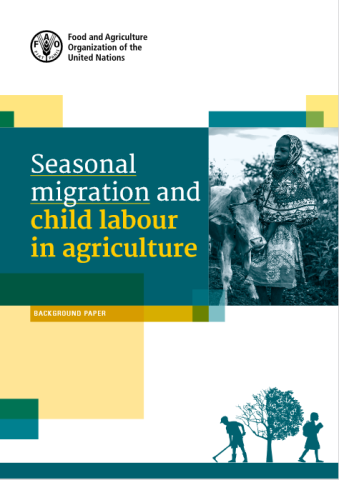Library
Seasonal migration and child labour in agriculture - Background paper
Agricultural production relies heavily on migrant labour across geographies and production systems, from large-scale plantations growing food crops for global supply chains to small-scale pastoralist families following their herds to new pastures depending on seasons. Much of the migration is seasonal, filling peak labour demands, such as during harvest. Hence, stable agri-food systems that can contribute to fulfilling Sustainable Development Goal (SDG) 2 on zero hunger are intrinsically intertwined with migrant workers’ lives and working conditions.
While migration can provide families with new opportunities, it can also pose challenges to children migrating with their parents or left behind. Seasonal agricultural migration often occurs informally and remains invisible. Migrant children often supplement adult family members’ labour and see their access to education constrained, and children in migrant families are at significantly higher risk of child labour than other children in the destination area.
This paper provides a global overview of the current state of knowledge and remaining gaps on the topic and highlights the challenges and opportunities to address child labour related to seasonal migration in agriculture.
